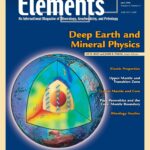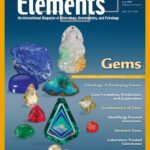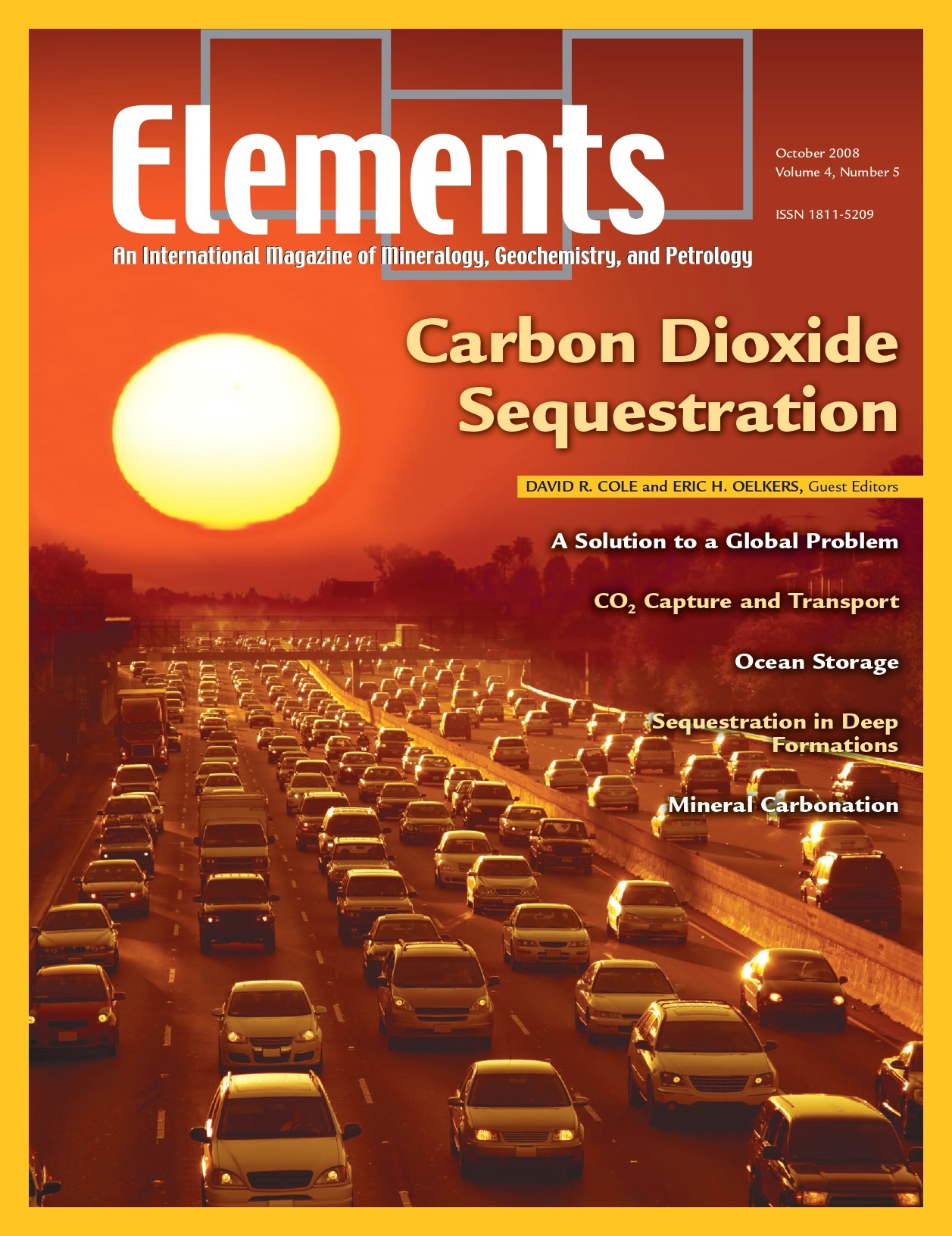
Deep Earth And Mineral Physics, June 2008, Vol. 4, No. 3
June 28, 2024
Gems, June 2009, Vol. 5, No. 3
June 28, 2024Carbon Dioxide Sequestration, October 2008, Vol. 4, No. 5
$20.00
Storage of carbon in the subsurface involves introduction of supercritical CO2 into rock formations beneath the surface of the Earth, typically at depths of 1000 to 4000 meters. Although CO2 is a relatively benign substance, the volume being considered is large.
Carbon Dioxide Sequestration
October 2008, Vol. 4, No. 5
Storage of carbon in the subsurface involves introduction of supercritical CO2 into rock formations beneath the surface of the Earth, typically at depths of 1000 to 4000 meters. Although CO2 is a relatively benign substance, the volume being considered is large. If developed to its envisaged potential, geologic sequestration will entail the pumping of CO2 into the ground at roughly the rate we are extracting petroleum today. To have the desired impact on the atmospheric carbon budget, CO2 must be efficiently retained underground for hundreds of years. Any underground storage system will have to account for the natural characteristics of subsurface formations; some are advantageous for storage while others are not. When foreign materials are emplaced in subsurface rock formations, they change the chemical and physical environment. Understanding and predicting these changes are essential for determining how the subsurface will perform as a storage container. The specific scientific issues that underlie sequestration technology involve the effects of fluid flow combined with chemical, thermal, mechanical, and biological interactions between fluids and surrounding geologic formations. Complex and coupled interactions occur both rapidly as the stored material is emplaced underground, and gradually over hundreds to thousands of years. The long sequestration times needed for effective storage and the intrinsic spatial variability of subsurface formations provide challenges to both geoscientists and engineers. A fundamental understanding of mineralogical and geochemical processes is integral to this success.
Why You’ll Love Elements Magazine:
- Expert Contributors: Articles written by renowned researchers in the field of geoscience.
- Engaging Content: Join a community of readers who are passionate about Elements.
- Exceptional Quality: Each issue is printed on high-quality paper with stunning visuals and detailed illustrations that bring complex scientific concepts to life.
Order your copy of the October 2008 issue of Elements magazine today and delve into carbon dioxide sequestration.
Related products
-
Arsenic, April 2006, Vol. 2, No. 2
$20.00Arsenic is an element known throughout history as a classic poison. Currently, very small but highly significant concentrations of this element in drinking water supplies are causing massive health problems to many millions of people in some of the world’s poorest nations, and more localised sources related to mining and processing are also a concern.
-
Fluids in Planetary Systems, January 2005, Vol. 1, No. 1
$20.00Water and other geofluids play an important role in the geochemical and rheological evolution of the Earth and other bodies in the solar system. These fluids are responsible for the formation of hydrothermal mineral deposits, affect eruption behavior in volcanic systems and the geophysical properties of the mantle, and significantly affect the way in which rocks deform and fracture.
-
Zircon – Tiny But Timely, February 2007, Vol. 3, No. 1
$20.00Where would Earth science be without zircon? As Earth’s timekeeper, zircon has proven to be a remarkable and versatile mineral, providing insights into deep time and ancient Earth processes. However, there is still much to learn about Earth’s history from zircon and its behaviour.




